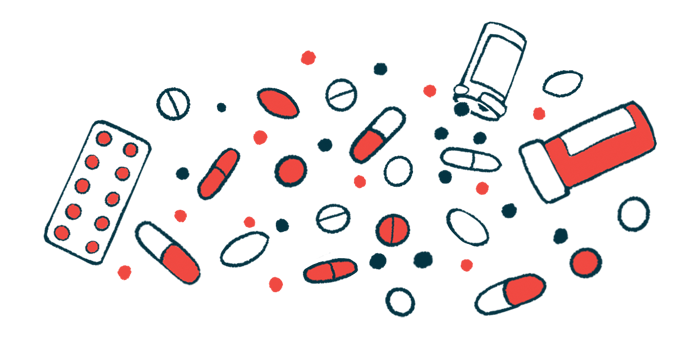Machine Learning IDs Approved Meds With Potential for Parkinson’s
Learning tools used to screen large database of treatments

Screening a large database with machine learning tools helped scientists identify approved medicines for other diseases that reduced the risk of developing Parkinson’s, a study reported.
According to researchers, these potential Parkinson’s disease therapies “deserve to be confirmed” in larger studies.
“Drug repurposing or repositioning is the application of a known drug to new indications and can lead to shorter and inexpensive drug development cycles with increased probability of success,” the team wrote.
Among the medication identified for possible further study were plain sulfonamide diuretics, particularly furosemide, which are used to reduce extra body fluid caused by conditions including heart failure. Exposure to these medications was linked to a reduced Parkinson’s risk, the scientists noted.
The machine learning study, “Identifying Protective Drugs for Parkinson’s Disease in Health-Care Databases Using Machine Learning,” was published in the journal Movement Disorders.
Using machine learning in research
The available treatments for Parkinson’s disease to date are only partially effective and fail to markedly delay disease progression. Thus, there is growing interest in repurposing existing medications as an accelerated method of therapeutic development.
Such approved treatments, having already been rigorously tested in clinical trials, generally have established safety profiles.
Studies have suggested that people treated with certain medications, including immunosuppressants or those that widen the airways, called bronchodilators, have a lower risk of developing Parkinson’s.
These findings prompted researchers based at the Université Paris-Saclay, in France, to use machine learning tools to automatically screen a large database of marketed therapies to detect those related to a lower risk of Parkinson’s.
“This study is part of a research effort aimed at identifying already-developed compounds associated with reduced [Parkinson’s disease] risk,” the researchers noted.
Data were collected from the French national health data system. A total of 40,760 incident Parkinson’s patients were identified based on the details of at least one claim for an anti-Parkinson’s medication from 2016 to 2018. A control group of 176,395 individuals of similar age, sex, and area of residence were included as a comparison.
Because data were accessible from 2006 onward, at least a 10-year follow-up was available before a Parkinson’s diagnosis. A lag of eight years before the diagnosis date was considered to be due to the long prodromal or pre-diagnostic phase of Parkinson’s. Notably, many patients face a delayed diagnosis of Parkinson’s because its symptoms are common to other disorders.
Given that, the team assessed therapeutic exposure and related factors during the two years before the lag period (exposure period) to find associations to a reduced risk of developing Parkinson’s disease.
The machine learning analysis identified eight potential therapies as part of six subgroups.
Identifying potential therapies
The strongest signal corresponded to plain sulfonamide diuretics, medications that promote the release of water from the body. Among them, furosemide — used to reduce extra bodily fluid caused by conditions such as heart failure, liver disease, and kidney disease — was most represented. Both frequent and ever exposure — ever exposure is coming into contact with a drug at any point — to furosemide stood out.
A suggestive signal came from frequent exposure to medications related to nicotine dependence. Nicotine is the chemical in tobacco that makes it hard for smokers to quit. This exposure was equally distributed between users of nicotine and varenicline, a therapy to help people stop smoking. Of these two medicines, only regular exposure to varenicline was associated with lower Parkinson’s risk.
Insulin aspart, a short-acting, lab-made version of human insulin, was the most represented substance among insulin and related therapies, with only sporadic use as a signal.
Among adrenergic medications, related to adrenaline, frequent exposure to formoterol, a bronchodilator in lung diseases, combined with anti-inflammatory corticosteroid budesonide, generated a signal. That signal corresponded to those ever exposed to the immunosuppressant mycophenolic acid.
Subgroups of soft paraffin and fat products, and direct-acting muscle relaxants also were identified via machine learning, but no signals were detected for specific medicines within these classes.
Following that testing, the team refined the analysis using a more specific definition of Parkinson’s. Here, 29,873 Parkinson’s patients and 176,395 controls were assessed. Overall, these analyses yielded results consistent with those from the whole group.
All signals identified in the primary analysis also were generated using the refined group, except for insulin and related therapies. The signal for plain sulfonamide diuretics, particularly furosemide, was stronger compared with the primary analysis.
Two signals were regenerated for the two main treatments for nicotine dependence (nicotine and varenicline), alongside any exposure to the bronchodilator tiotropium bromide and direct-acting muscle relaxants.
New signals not found in the primary analysis were identified, including medical moisturizers called emollients used to treat skin conditions, as well as anti-inflammatory medications and non-steroids for topical use. Anticholinergics, or substances that block the action of the nerve cell signaling molecule called acetylcholine, and mucolytics — used to clear mucus from the airways — also generate a signal.
“The search for new [Parkinson’s disease] therapies through drug repositioning has gained attention given the current lack of fully satisfactory therapeutic options,” the researchers wrote. “We screened … a large number of drugs and identified plain sulfonamide diuretics as a drug chemical subgroup potentially inversely associated with [Parkinson’s disease] risk.”
“Our findings result in new hypotheses that deserve replication and could lead to developing new therapeutic or preventive strategies in [Parkinson’s disease],” the researchers added.








